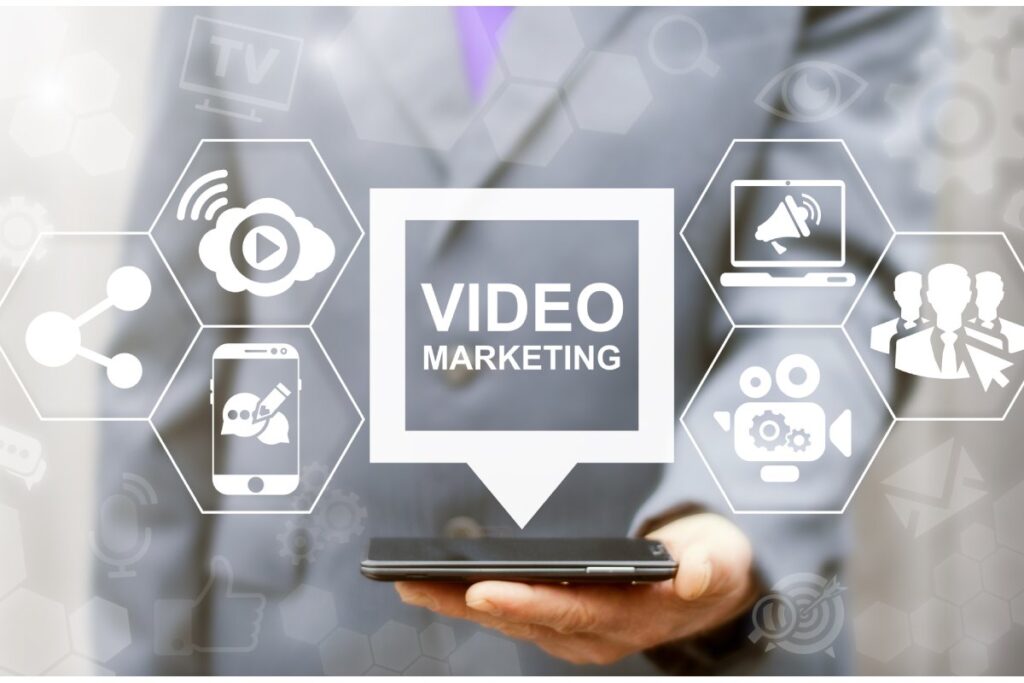Introduction
In 2025, video marketing has become a cornerstone of digital strategy, with 85% of businesses using video to engage audiences and drive growth. Videos—whether short-form content on platforms like X or in-depth tutorials on YouTube—offer a dynamic way to connect with customers. This article highlights the top five benefits of video marketing for businesses, showcasing its power to boost engagement, conversions, and brand visibility.
What Is Video Marketing?
Video marketing involves creating and sharing videos to promote products, services, or brand values. Formats include promotional ads, tutorials, customer testimonials, live streams, and social media clips. With 80% of global internet traffic driven by video in 2025, it’s a critical tool for businesses to capture attention and deliver messages effectively.
Top 5 Benefits of Video Marketing
1. Boosts Engagement and Retention
-
Why It Matters: Videos are more engaging than text or images, with users spending 88% more time on websites with video content.
-
How It Works: Dynamic visuals, storytelling, and audio capture attention and keep viewers hooked. For example, short-form videos on X or TikTok (under 60 seconds) achieve 2x higher engagement rates than static posts.
-
Business Impact: Higher engagement increases dwell time, signaling relevance to search engines and improving SEO rankings.
-
Tip: Create concise, visually appealing videos with clear CTAs to maximize viewer retention.
2. Enhances Brand Awareness and Reach
-
Why It Matters: Videos are highly shareable, with 92% of viewers sharing videos they enjoy, amplifying brand exposure.
-
How It Works: Platforms like YouTube, Instagram, and X prioritize video content in algorithms, increasing visibility. For instance, a well-crafted video can go viral, reaching thousands organically.
-
Business Impact: Expanded reach attracts new audiences, especially when videos are optimized with hashtags or shared in relevant communities.
-
Tip: Post videos natively on each platform and use trending audio or challenges to boost discoverability.
3. Drives Higher Conversions and Sales
-
Why It Matters: 64% of consumers are more likely to purchase after watching a branded video.
-
How It Works: Videos showcase products or services in action (e.g., demos, unboxings), building trust and clarity. Landing pages with videos can increase conversions by up to 80%.
-
Business Impact: Videos drive direct sales or lead generation, particularly for e-commerce and service-based businesses.
-
Tip: Include shoppable links or CTAs in videos, especially on platforms like Instagram or Shopify.
4. Builds Trust and Credibility
-
Why It Matters: 70% of consumers trust brands more after watching authentic video content like testimonials or behind-the-scenes footage.
-
How It Works: Videos humanize brands by showcasing real people, stories, or values. Customer testimonial videos, for example, resonate strongly, as 90% of buyers rely on reviews.
-
Business Impact: Increased trust fosters loyalty and encourages repeat purchases or referrals.
-
Tip: Feature real customers or employees in videos to create authentic, relatable content.
5. Improves SEO Performance
-
Why It Matters: Websites with video content rank higher on Google, as videos increase dwell time and reduce bounce rates.
-
How It Works: Search engines prioritize engaging content, and videos embedded on websites or YouTube channels boost organic rankings. Optimized video titles, descriptions, and tags further enhance discoverability.
-
Business Impact: Higher rankings drive 30–50% more organic traffic, leading to more leads and sales.
-
Tip: Use tools like TubeBuddy or VidIQ to optimize video metadata and embed videos on your website.
How to Leverage Video Marketing Effectively
-
Know Your Audience: Tailor content to their preferences (e.g., tutorials for DIYers, fun ads for younger demographics).
-
Use Multiple Platforms: Distribute videos on YouTube for long-form, X for real-time engagement, and Instagram for visuals.
-
Keep It Short and Impactful: Aim for 15–60 seconds for social media videos and 2–3 minutes for tutorials or demos.
-
Invest in Quality: Use tools like Canva or Adobe Premiere Pro for professional visuals, even on a budget.
-
Track Performance: Monitor views, engagement, and conversions with analytics tools like YouTube Studio or Google Analytics.
Common Mistakes to Avoid
-
Low-Quality Production: Poor audio or visuals deter 60% of viewers.
-
Lack of Strategy: Random videos without clear goals fail to engage or convert.
-
Ignoring CTAs: Not guiding viewers to take action reduces ROI.
-
Overlooking Analytics: Failing to track performance limits optimization.
-
Neglecting Mobile: Non-optimized videos lose the 60% of viewers watching on mobile devices.
Real-World Examples
-
Local Gym: A Miami fitness studio posted weekly workout videos on Instagram, increasing class signups by 35% in 2025.
-
E-commerce Brand: A small retailer used product demo videos on Shopify, boosting conversions by 25% within three months.
-
Home Service Business: A Texas plumber shared “DIY Plumbing Tips” on YouTube, driving 50% more website traffic and leads.
Conclusion
Video marketing is a powerful tool for businesses in 2025, offering unmatched engagement, brand visibility, and conversion potential. By leveraging its ability to captivate audiences, build trust, and improve SEO, businesses can connect with customers and drive measurable results. Start with targeted, high-quality videos, distribute them strategically across platforms, and track performance to build an active, loyal customer base and fuel long-term growth.

